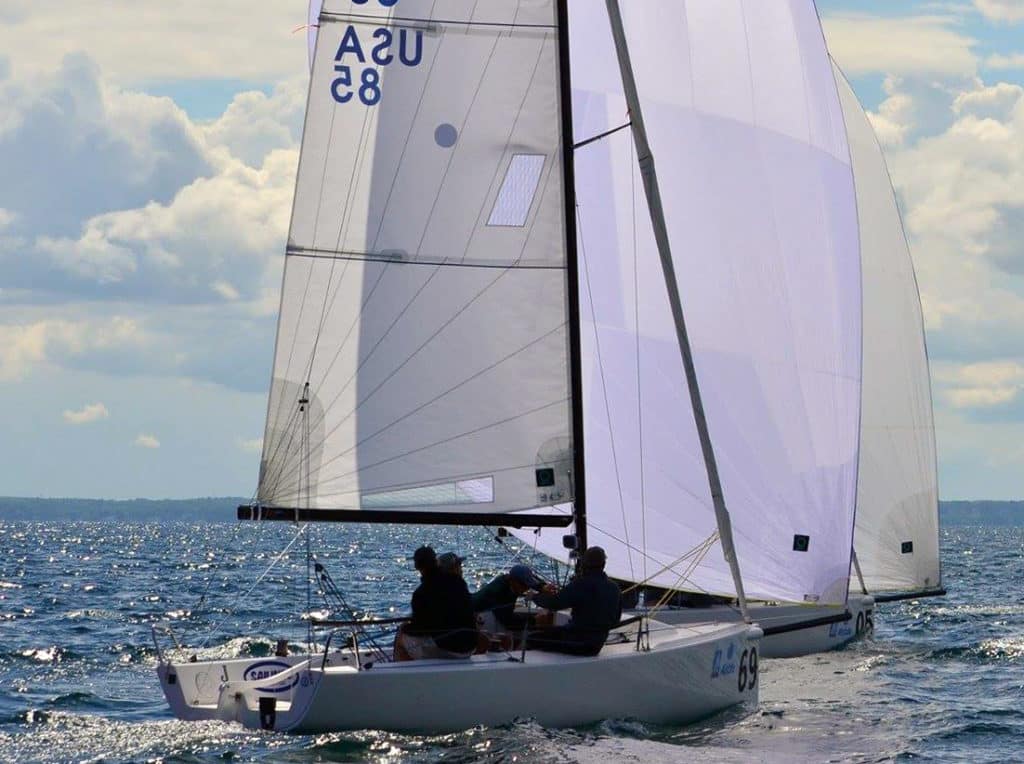
Two years ago I had a great opportunity to sail my first J/70 event with two class veterans, Allan Terhune Jr. and Ray Wulff. As the rookie of the boat everything from launching to hoisting sails was new, and while it’s still “just a boat” I stood at times and took orders, as only a rookie should. The experience was a great reminder of how to do things simple, play to your strengths, and set simple goals.
Keep it Simple
Keeping it simple was key and while the J/70 is not a tuning nightmare it does pose a variety of tension on rig tune and rake. Knowing that we could not adjust rake once we left the dock we set the length to allow a first timer in the boat a little more feel. As always, the easiest sailed boat is fast and this was no exception. Focusing on keeping the setup simple and easy was key to success on the day. Very early on in the exercise, after a couple of line-ups, we marked the mainsheet and jib sheets to duplicate. There’s absolutely nothing wrong with trimming to a mark for a course trim and fine-tuning from there.
Playing to our strengths
As we set out on the first day, there was a bit of discussion about positions on board. Generally speaking, Ray does tactics (bow) on the J/70 he races and Allan is a boatspeed fanatic. There was more discussion of having Ray trim and Allan free for tactics, but after one tack we went for the change. Ray went straight to his comfort zone on the bow and Allan right into the boatspeed role. Very quickly we could see the fruition of the decision as each of us had a good feel for our respective roles. Having Allan focus on the boatspeed paid dividends, as inevitably every decision looks good if you are fast. Al’s attention to speed allowed Ray to make good decisions. I tried to steer the boat as fast as possible and not over think the adjustments. Knowing our strengths and understanding our limitations allowed us to do what we could well and not over think the simple points.
Goal setting
Starting out in a boat with a new team had us all thinking about our own expectations. Being competitive, we all wanted to win and yet potentially that’s not realistic. The conversation quickly turned to what each one of us wanted out of the day. Ray wanted to learn settings and sail trim from Allan and win both races. Allan wanted to get a feel for his new Quantum sail designs and set up as well as understand the potential strengths and weaknesses of the Quantum settings. For me, not having driven the boat ever, I wanted to start well and do the best I could for Allan and Ray. This meant keeping my mouth shut, driving fast, and tacking the boat when I was told! Pretty simple really, and having been in the tacticians role for a few events, I know the benefit of a helmsman that can drive fast and provide feedback at the right time.
All in all, it was a successful day, we met our goals, and yet it was a great reminder to the process of success. Allowing everybody on the boat to play to their strengths as a team ultimately kept things very simple. This process can get more convoluted as the team size grows or teams struggle to find success within competition. A good process of debriefing to identifying strengths and weaknesses will help any team to get better. These experiences, individually and together, allow a team to develop, grow, and improve.









